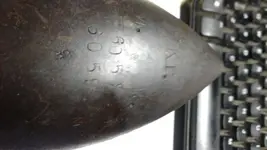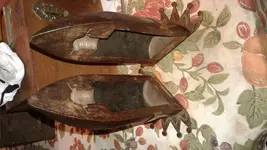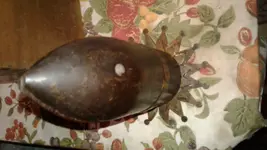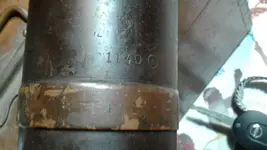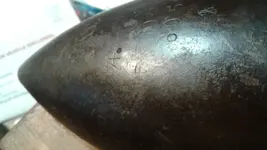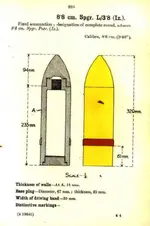CSA2K, as you probably know, my area of professional expertise is civil war and earlier artillery projectiles. The shell in your photos is definitely from several (two to five) decades after the end of the civil war. So, I was waiting for somebody who knows more about 1880s-and-later artillery projectiles to speak up. No info resulted. So I'll give it a shot, based on my admittedly limited knowledge of post-1880s artillery projectiles. I hope it will be of at least some usefulness to you.
I've never seen markings like those on American artillery projectiles. The "script R" makes me think it's European.
I've also never seen an artillery shell whose fuze is located entirely inside the shell (not exposed at the nose, or side, or base). Therefore, I suspect having that location for the fuze was a brief trial, which proved unsatisfactory, so its use was not continued.
I have seen a few varieties of artillery shells which have a large iron screw-in iron/steel disc in their flat base... as yours does. That too was a sort of "experimental" form, which was seldom continued. The only ones I've SEEN that have a screw-in iron/steel base are from the 1800s. But of course, here I must say I do not believe I've seen everything there is to see. It's possible that it is from a later time. But see my additional time-dating reasoning in the next paragraph.
Its solid (not hollow) "nose" combined with a large powder-cavity in the cylindrical (non-pointed) section of its body tells me it is a high-explosive Armor-Piercing shell. A decade or so into the 1900s, experimentation by various nations' Ordnance Departments discovered that a sharp-pointed nose was actually NOT good at piercing thick armor. So, the sharp-pointed nose on your Armor-Piercing shell, and its unusual fuze location, and screw-in base indicate it is from sometime in the late 1800s to 1910s. It could be from the Spanish-American War era to as late as World War One. If I had to narrow that estimate, I'd go with late-1800s, because of the extremely unusual entirely-internal fuze location.



